When it comes to building bigger arms, the debate between seated and standing curls can feel overwhelming.
Some swear by standing curls, arguing they’re superior because they let you lift heavier weights, which is critical for gaining size and strength.
Others argue seated curls are the smarter choice, as they force you to use stricter form, which ensures your biceps do all the work. Plus, they stop you from using momentum, which helps prevent you from straining your lower back.
But who’s right?
The truth is, it depends on your goals and preferences. In this guide, you’ll discover the pros and cons of each to help you decide which is best for building stronger, more muscular arms.
Key Takeaways
- Standing curls allow you to lift heavier weights, making them better for building biceps strength.
- They’re also more versatile and require less equipment, so they’re convenient for at-home biceps training.
- Seated bicep curls are ideal for isolating your biceps and maintaining strict form, helping you minimize momentum and reduce lower back strain.
- Incorporating a mix of standing and seated curls into your routine is the most effective way to maximize arm growth and strength.
Seated vs. Standing Biceps Curls
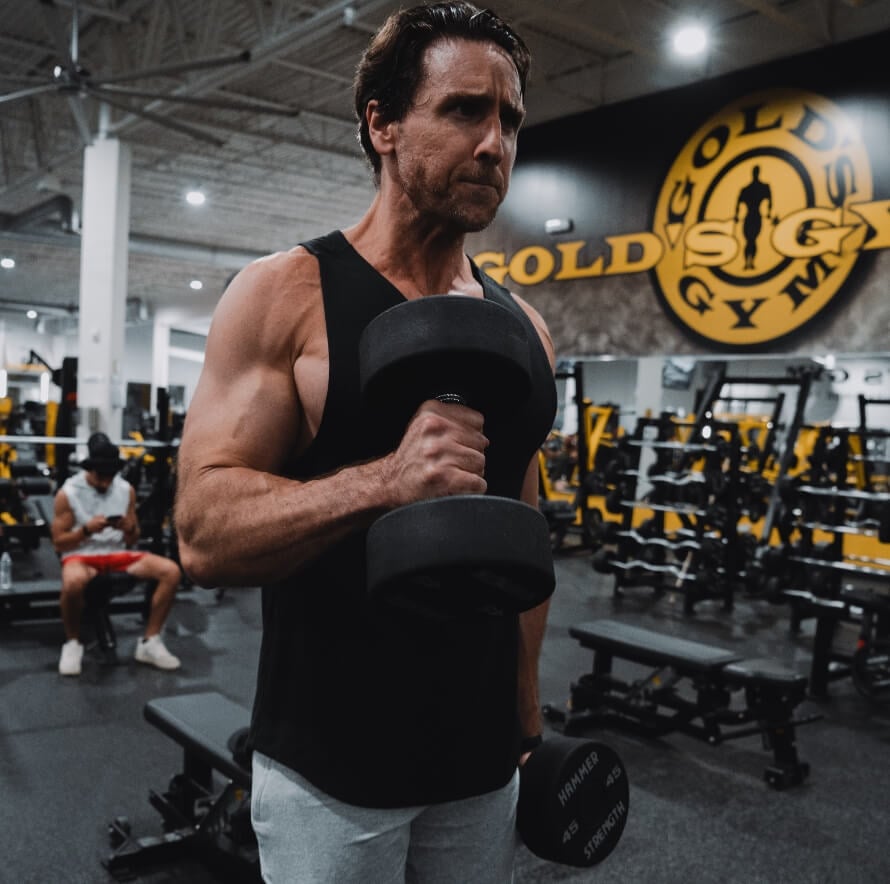
What Are Standing Biceps Curls?
A standing biceps curl is any exercise that involves standing on your feet while curling a weight to your shoulder by bending your elbow. You can perform standing biceps curls one arm at a time or using both arms simultaneously.
Standing biceps curls are also highly versatile—you can do them with basically any equipment you have available, including dumbbells, a barbell, a machine, or a cable.
Here’s an example of how a standing curl might look:
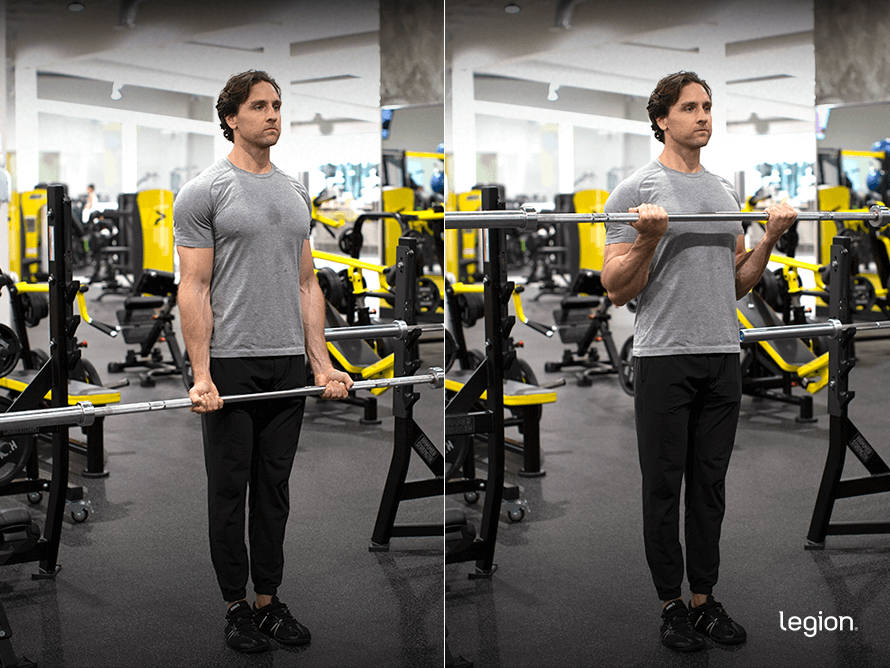

What Are Seated Biceps Curls?
A seated biceps curl is any exercise that involves curling a weight to your shoulder by bending your elbow while sitting down, typically on a bench or machine seat.
Unlike standing biceps curls, people rarely perform sitting biceps curls with cables. Instead, common variations include seated dumbbell curls, preacher curls, and curls on a seated arm curl machine. This is because working around a bench or seat makes some equipment less practical for the exercise.
Here’s an example of how a seated curl might look:
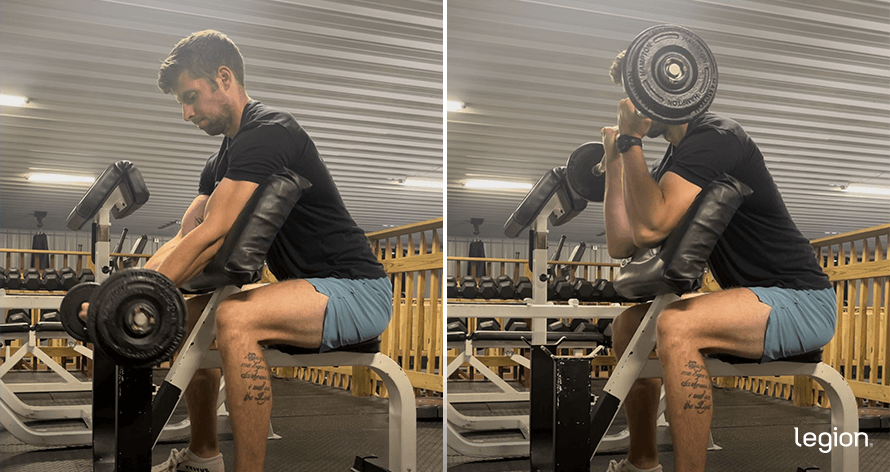

The Benefits of Standing Curls
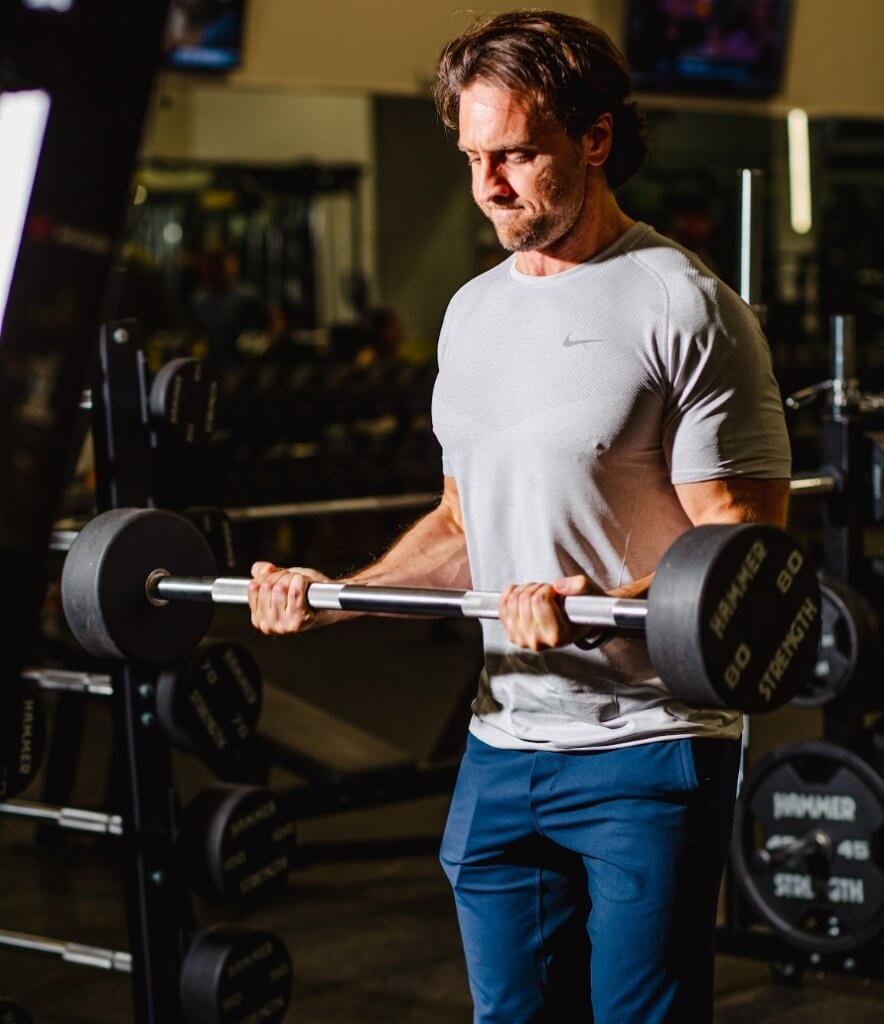

Greater Biceps Strength Gain
Standing curls allow you to lift heavier weights compared to seated curls for two reasons:
- Standing allows you to adopt a more athletic stance, making the exercise feel more balanced and stable.
- You can generate momentum with your hips and lower body to help lift the weight.
Lifting heavier weights typically leads to greater strength gains, which is why standing curls are often better for building biceps strength than seated curls.
Simpler Setup
Setting up for standing curls is quick and easy. You don’t need a bench or any special equipment—just a weight and a small amount of floor space. This makes standing curls more convenient, especially if you’re short on time or equipment.
Highly Versatile
You can perform standing curls with almost any type of equipment—bands, barbells, machines, cables, kettlebells, and dumbbells are all viable options. You also only need a small amount of space, so you can easily fit them into your routine whether you’re training at home, while traveling, or at the gym.
Less Restrictive
When you stand to perform the biceps curl, your arms can move freely without you having to worry about hitting a bench. Generally speaking, this means you can train through a larger range of motion and the exercise feels more smooth and natural.
The Downsides of Standing Curls
Increased Momentum
When you perform standing curls, it’s easy to use momentum from your hips or lower body to lift the weight. While this might help you move heavier loads, it takes some of the work away from your biceps, making the exercise less effective for isolating your “bis”.
Lower Back Stress
Standing curls can strain your lower back, especially if you use your lower back to lever the weight up or hyperextend your spine at the top of each rep. Over time, this can lead to discomfort or even injury.
Lower Biceps Engagement
Because standing curls allow other muscle groups like your shoulders and core to get involved, your biceps might not receive as much stimulation as they would with seated curls. In other words, if your goal is to completely isolate your biceps, standing curls might not be the best choice.
The Benefits of Seated Curls
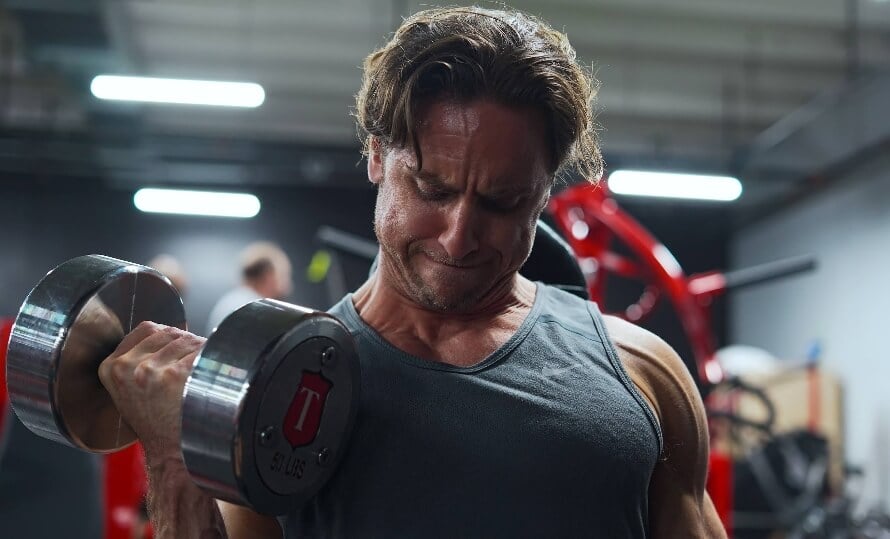

Better Biceps Isolation
Seated curls limit the involvement of your lower body. Without the ability to generate momentum from your hips or legs, your biceps have to do most of the work, which can make seated curls more effective for isolating the biceps than standing curls.
Stricter Form
Doing biceps curls sitting down minimizes your ability to swing the weight or use momentum, which “locks in” your form and ensures your biceps are working as hard as possible.
Reduced Lower Back Strain
Since seated curls don’t require you to stabilize your entire body, they place less strain on your lower back compared to standing curls. This makes them a safer and more comfortable option if you’re dealing with lower back discomfort or simply want to avoid unnecessary stress in that area.
The Downsides of Seated Curls
Less Overall Strength Gain
Seated curls limit how much weight you can lift because they prevent you from getting assistance from other body parts. While this isn’t always a bad thing—it ensures your biceps do most of the work—it could reduce your potential for building biceps strength over time.
Restricted Range of Motion
Sitting down to perform curls can restrict your movement, especially if the bench, seat, or your legs get in the way. This often limits the range of motion, which makes the exercises less effective and can cause it to feel unnatural.
For beginners, adjusting the exercise to avoid hitting something can also add unnecessary complexity. For instance, the extra challenge of maneuvering weights around a bench or your legs can make it harder to focus on proper technique, especially if you’re still developing the coordination to perform curls correctly.
More Time-Consuming Setup
Seated curls require additional equipment like a bench or machine, which can take more time to set up compared to standing curls. This might not seem like a big deal, but if you’re short on time or equipment, it can make seated curls less convenient.
How to Do a Standing Dumbbell Biceps Curl
- Stand with your feet shoulder-width apart, holding a dumbbell in each hand at your sides and your palms facing forward.
- Bend your right elbow to curl your right hand toward your right shoulder.
- Reverse the movement and return to the starting position.
- Repeat the pattern with your left hand to complete one full rep.
How to Do a Seated Dumbbell Biceps Curl
- Sit on the edge of a bench with your slightly narrower than hip-with apart.
- Grab a dumbbell in each hand and let your arms hang at your sides with your palms facing your.
- Bend your right elbow to curl your right hand toward your right shoulder, rotating your wrist so your palm faces your shoulder at the top of the rep.
- Reverse the movement and return to the starting position.
- Repeat the pattern with your left hand to complete one full rep.
Standing Curl Variations
Standing Barbell Curl
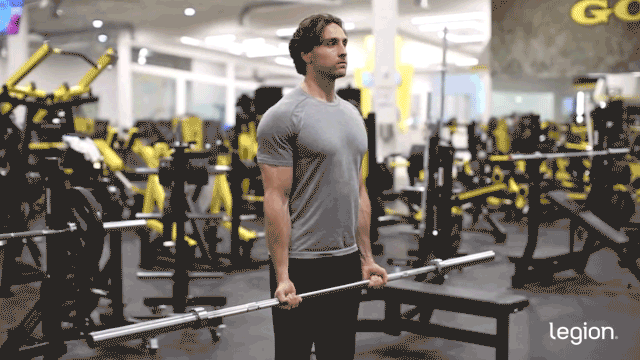

The standing barbell curl allows you to lift more weight than any other standing or seated biceps curl variation, making it the best choice for building biceps strength.
It also activates more muscles throughout your body compared to the standing dumbbell curl—particularly your shoulders and core—making it an excellent option for developing all-around mass.
Standing Cable Curl
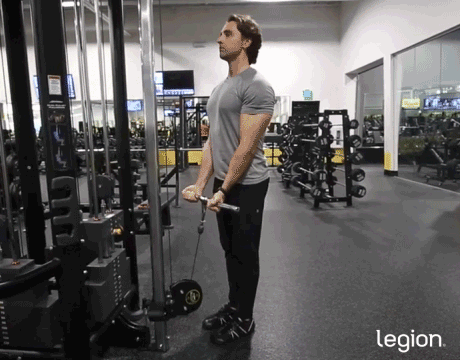

Because the standing cable curl involves a cable, it provides constant tension on your biceps throughout the entire range of motion. This offers a different stimulus to free-weights, which is beneficial because varying your training likely maximizes growth.
Standing Preacher Curl


In the standing preacher curl, you place your upper arms on a preacher curl bench, which prevents you from using your lower body to generate momentum and ensure your biceps do most of the work.
It also means you place a lot of tension on your biceps when they’re stretched, which is likely why research shows the preacher curl is an outstanding exercise for building biceps mass.
Standing Hammer Curl
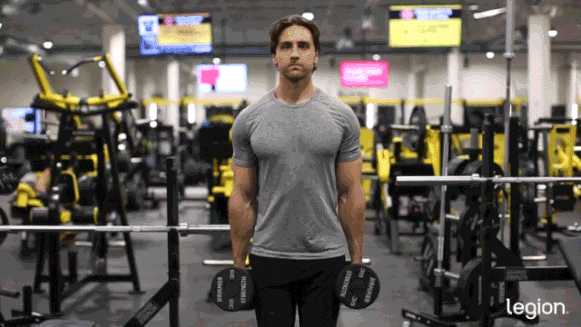

The standing hammer curl trains your entire biceps, but it also emphasizes the brachialis, a small muscle that helps to “push up” the main biceps muscle and add significant mass to your upper arms.
Because you don’t rotate your wrists, many also find the standing hammer curl gentler on the elbows than other standing curl variations.
Standing Bayesian Cable Curl
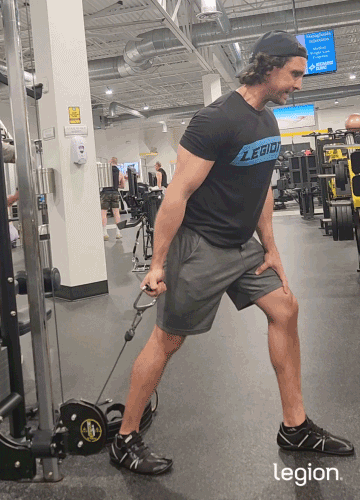

The standing Bayesian biceps curl trains your biceps through a full range of motion and places a lot of tension on the long head (outer biceps) while stretched, making it an excellent standing curl variation for building arm mass.
However, the standing Bayesian curl requires more setup, technique, and balance than other standing curl variations, which might make it less suitable if you’re new to weightlifting.
Seated Curl Variations
Seated Incline Dumbbell Curl
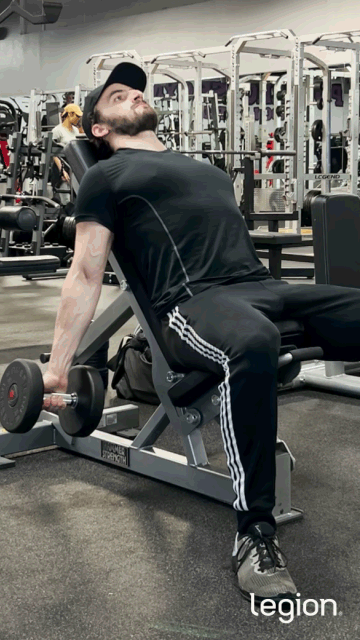

The seated incline dumbbell curl trains your biceps when they’re behind your torso, which emphasizes the biceps long head. It also places high tension on the biceps throughout the entire range of motion, which is important for developing balanced size and strength.
To ensure you reap the benefits of the seated incline dumbbell curl, keep your elbows behind your body throughout each rep. If your elbows creep forward, you negate the benefits of the exercise, making it less effective.
Seated Preacher Curl


The seated preacher curl is almost identical to the standing version, only you perform it sitting down. As such, you can think of the exercises as interchangeable—do whichever you prefer.
Machine Seated Biceps Curl
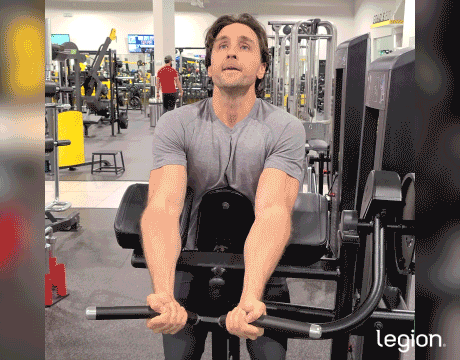

In the machine seated biceps curl, your upper arms are “fixed” in front of your body. This is significant because it limits how much the long head of your biceps contributes to the movement, which should theoretically help you gain biceps thickness by emphasizing your biceps short head (inner biceps).
Similarly to the preacher curl, it also places a ton of tension on your biceps when stretched, which provides an excellent stimulus for growth.
FAQ #1: Are seated biceps curls better than standing curls?
It depends on your goals. Seated biceps curls are better for isolating your biceps and minimizing the involvement of other muscles.
They’re also ideal for maintaining strict form and reducing strain on your lower back, so they often work better for those with lower back issues.
Standing biceps curls, on the other hand, allow you to lift heavier weights, which makes them better for building biceps strength. They also engage more muscles (e.g., the shoulders and core), giving them the edge for overall upper body muscle gain.
In other words, both standing and seated biceps curls have their advantages, so including a mix of both in your training is likely the best option for maximizing arm growth.
FAQ #2: Are seated bicep curls harder than standing curls?
Seated curls can feel harder because they limit your ability to use momentum from your hips or lower body to lift the weight. This forces your biceps to do more of the work, which can make the exercise feel more challenging.
That said, standing curls can feel harder in other ways. For example, they usually involve more muscles throughout your body, especially your core and lower back, so they can feel like a more taxing exercise overall.
FAQ #3: What muscles do seated and standing curls work?
The main muscles worked by seated and standing curls are the biceps brachii, or “biceps,” the two-headed muscles located on the fronts of the upper arms between the shoulders and elbows. Here’s how the biceps look on your body:
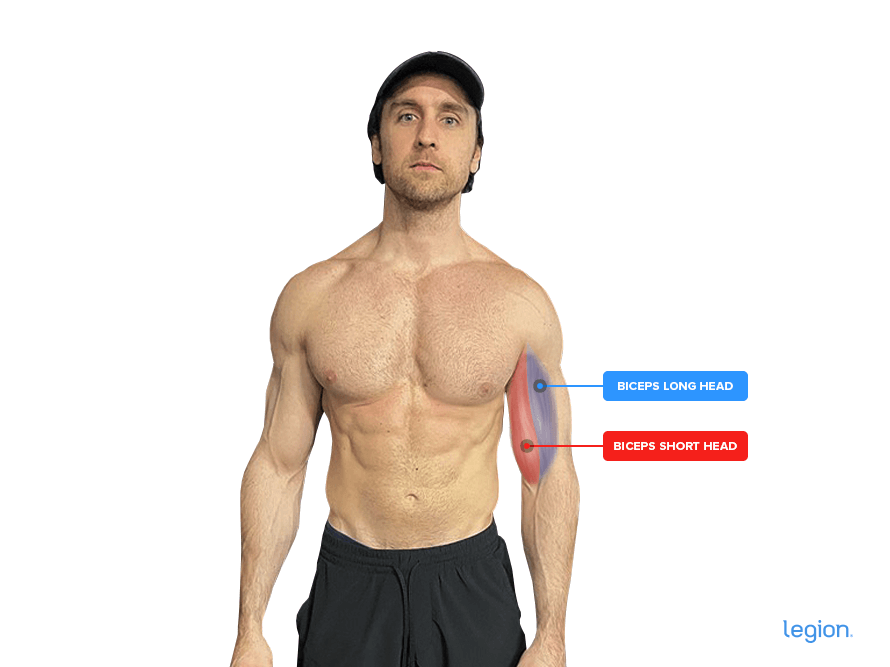

Scientific References +
- López, Pedro Ángel, et al. “Disposición Sagital Del Raquis Lumbar Y Torácico En El Ejercicio de Curl de Bíceps Con Barra En Bipedestación. (Sagittal Disposition of the Lumbar and Thoracic Spine in the Standing Barbell Curl).” Cultura_Ciencia_Deporte, vol. 3, no. 7, 2007, pp. 19–24, https://doi.org/10.12800/ccd.v3i7.154. Accessed 18 May 2021.
- HANDA, TOHRU, et al. “COMPARATIVE ELECTROMYOGRAPHICAL INVESTIGATION of the BICEPS BRACHII, LATISSIMUS DORSI, and TRAPEZIUS MUSCLES during FIVE PULL EXERCISES.” Japanese Journal of Physical Fitness and Sports Medicine, vol. 54, no. 2, 2005, pp. 159–168, https://doi.org/10.7600/jspfsm.54.159.
- Costa, Bruna Daniella de Vasconcelos, et al. “Does Performing Different Resistance Exercises for the Same Muscle Group Induce Non-Homogeneous Hypertrophy?” International Journal of Sports Medicine, vol. 42, no. 09, 13 Jan. 2021, pp. 803–811, https://doi.org/10.1055/a-1308-3674.
- Zabaleta-Korta, Aitor, et al. Regional Hypertrophy: The Effect of Exercises at Long and Short Muscle Lengths in Recreationally Trained Women. 2023, https://doi.org/10.5114/jhk/163561.
- Schoenfeld, Brad J. “The Mechanisms of Muscle Hypertrophy and Their Application to Resistance Training.” Journal of Strength and Conditioning Research, vol. 24, no. 10, Oct. 2010, pp. 2857–72, journals.lww.com/nsca-jscr/fulltext/2010/10000/The_Mechanisms_of_Muscle_Hypertrophy_and_Their.40.aspxLike.
- Oranchuk, Dustin J., et al. “Isometric Training and Long-Term Adaptations: Effects of Muscle Length, Intensity, and Intent: A Systematic Review.” Scandinavian Journal of Medicine & Science in Sports, vol. 29, no. 4, 13 Jan. 2019, pp. 484–503, onlinelibrary.wiley.com/doi/full/10.1111/sms.13375, https://doi.org/10.1111/sms.13375.
- Oliveira, Liliam F, et al. “Effect of the Shoulder Position on the Biceps Brachii Emg in Different Dumbbell Curls.” Journal of Sports Science & Medicine, vol. 8, no. 1, Mar. 2009, p. 24, pmc.ncbi.nlm.nih.gov/articles/PMC3737788/.



